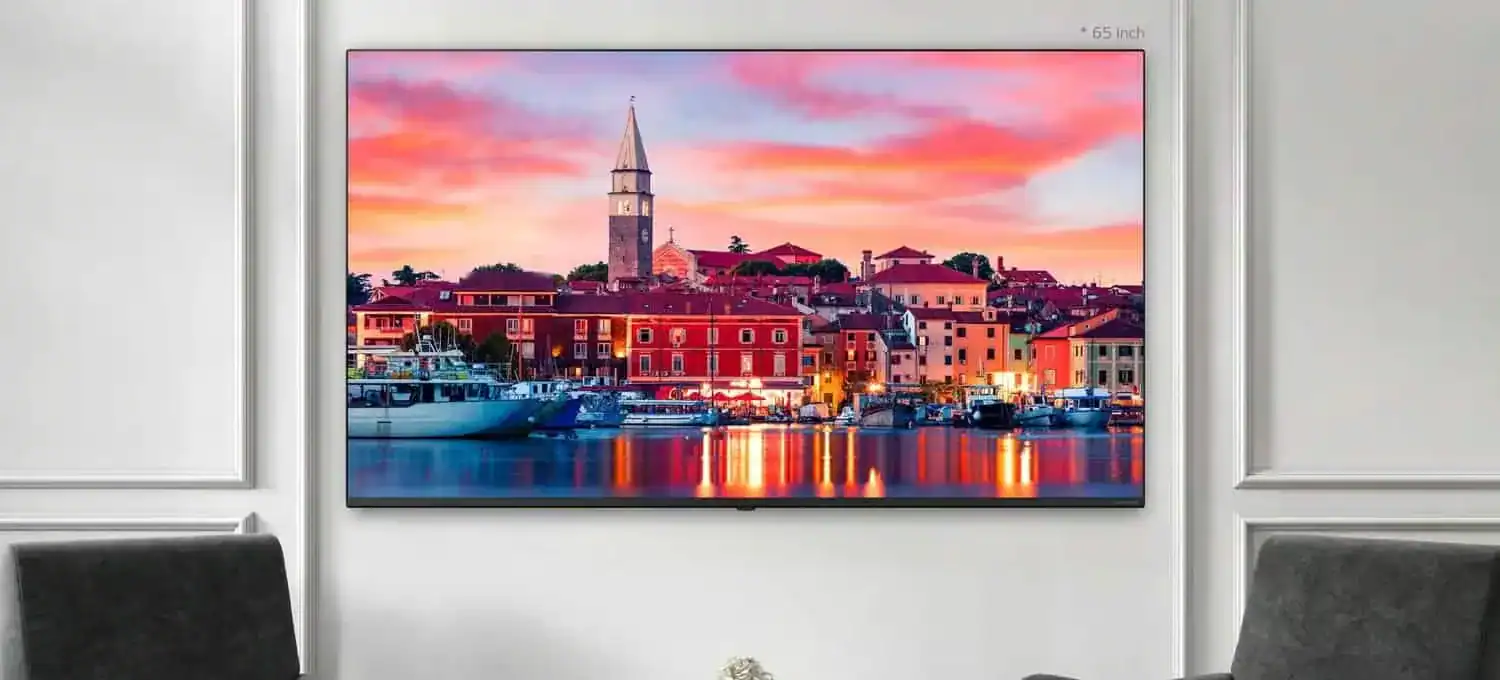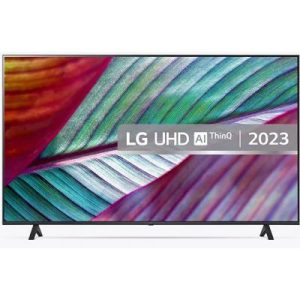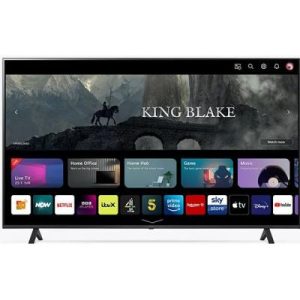LED-vs-LCD? Lately, choosing a TV has become like walking into a candy store. There are so many TV technology options to choose from, and each of them seems just as good. Then there are the technical terms to deal with, such as LED TV, LCD TV, QLED TV, UHD TV, OLED TV, and more. You might feel like you need to be a tech pro just to watch your favourite TV show in the evening or enjoy a game with your friend. However, the confusion comes in deciding whether to go for a direct view LED (LED display), LED TV or LCD TV screen. The three might seem similar in name, but they are worlds apart. Many individuals are switching from LCD TVs and LED TVs to LED displays. The reason for the switch lies in the innumerable benefits Direct view LED offers. Here at Dynamo LED, we offer all of them, and we appreciate their benefits. Be sure to check out our buying an LED Display guide for more info.
4K Smart TV's For Sale
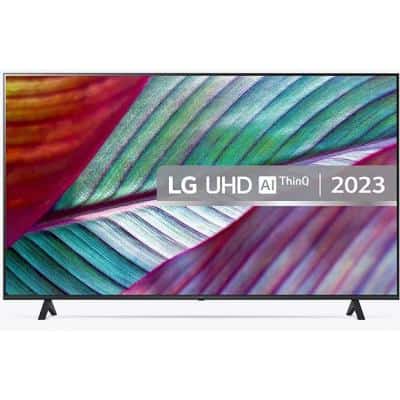
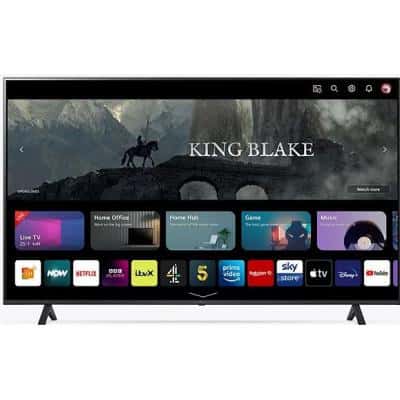
LED vs LCD Technology
First, an important thing to understand is that the LED (Light Emitting Diode) monitor and not to be confused with dvLED (direct view LED) is an improvised version of the LCD (Liquid Crystal Display). This is why all LED monitors are LCD in nature, but not all LCDs are LED monitors. Direct view LED displays on the other hand are completely different technology to LED or LCD monitors and are almost always made up of modular LED cabinets and modules which have individual RGB LED’s on the surface. The cabinets are then fixed together seamlessly to create large LED displays of various shapes, sizes and aspect ratios.
LCD technology revolutionised monitors by using cold cathode fluorescent lamps for backlighting to create the picture displayed on the screen. A cold cathode fluorescent lamp (CCFL) is a tiny fluorescent bulb. In the context of this article, LCDs refer to this traditional type of CCFL LCD TVs.
LED monitors took the old technology a step further by replacing the fluorescent bulbs with LED backlight technology. And OLED (organic light-emitting diode) technology improves it even further by eliminating the need for backlighting. So with traditional (excluding direct view LED) LCD vs LED, LCD is essentially the old technology.

Direct-View LED (dvLED) vs. LED-Backlit: What’s the Difference?
When it comes to display technology, the terms “LED” and “LCD” are often used interchangeably, but they represent fundamentally different approaches. Let’s break down the key differences between Direct-View LED (dvLED) displays and LED-backlit LCD screens to help you understand their unique advantages.
What is dvLED?
Direct-View LED (dvLED) displays, often referred to simply as LED displays, are a cutting-edge technology that differs significantly from the “LED TVs” commonly found in stores. Those TVs are actually LED-backlit LCD screens, which rely on a liquid crystal layer illuminated by LED backlights. In contrast, dvLED displays eliminate the LCD panel entirely. Instead, they use thousands or even millions of tiny Light Emitting Diodes (LEDs) as individual pixels to create the image directly.
Each pixel in a dvLED display consists of red, green, and blue LEDs mounted on a circuit board. These LEDs emit light and colour independently, eliminating the need for backlights or colour filters. This structural difference gives dvLED displays several advantages over traditional LED-backlit LCDs. If you’re looking to install dvLED Consult with our skilled LED screen experts to discover the perfect solution for your business.
Key Advantages of dvLED Displays
1. Superior Brightness and Contrast
Without the polarising glass or liquid crystal layers found in LCDs, dvLED displays achieve much higher brightness and contrast. They can reach brightness levels several times greater than LCDs, making them ideal for environments with bright ambient light or direct sunlight. Additionally, when an LED pixel is turned off, it emits no light, resulting in true blacks—similar to OLED technology. In comparison, LCD panels often allow some light leakage, leading to greyer blacks.
2. Exceptional Viewing Angles
Since each pixel in a dvLED display emits light directly, the viewing angle is nearly 180°. This means the image remains bright and color-accurate even when viewed from the side. In contrast, LCD screens can lose brightness and colour fidelity at extreme angles due to their layered structure.
3. Pixel Pitch and Resolution
Instead of traditional resolution labels like 1080p or 4K, dvLED displays are defined by “pixel pitch”—the distance between adjacent LED pixels, measured in millimeters. A smaller pixel pitch means more LEDs per inch, resulting in higher detail and smoother images. For example:
- Outdoor dvLED billboards may have a very high pixel pitch of 5mm or even up to 20mm on very large displays, as they’re designed for distant viewing.
- Indoor dvLED displays for close-up viewing can have pitches as fine as 0.4mm, delivering ultra-high resolution.
Advancements like Chip-On-Board (COB) technology and micro-LEDs have pushed pixel pitches to as low as 0.5mm, enabling stunning 4K or 8K resolutions on relatively compact screens.
4. Scalability and Seamless Design
dvLED displays are modular, built from tiled LED panels that fit together seamlessly. This allows for the creation of massive screens with no visible borders, unlike LCD video walls, which have distracting bezels. dvLED walls can be customised to virtually any size or aspect ratio. This makes them perfect for large venues, and you can see examples by exploring our options for hiring a direct-view LED display.
5. Durability and Longevity
LEDs are solid-state components with lifespans often exceeding 100,000 hours (over 10 years of continuous use). dvLED displays are also energy-efficient, generating less heat for the same brightness output compared to older technologies. Maintenance is simplified, as individual LED modules can be replaced without dismantling the entire screen.
Where dvLED Technology Excels
1. Large Venues and Outdoor Displays
dvLED is the go-to solution for stadiums, arenas, and outdoor billboards. These environments demand massive screen sizes, high brightness, and weather resistance. dvLED displays deliver vibrant visuals that remain clear even in direct sunlight.
2. Control Rooms and Command Centers
In mission-critical environments like control rooms and broadcast studios, dvLED walls with fine pixel pitches provide ultra-high-resolution displays that can run 24/7. Their seamless design ensures uninterrupted visuals, making them ideal for monitoring multiple data feeds or video streams.
3. Retail and Experiential Signage
High-end retail stores, museums, and corporate lobbies use dvLED displays to create immersive digital experiences. These displays can be customised into unique shapes, such as curved or transparent panels, offering eye-catching visuals that standard LCDs can’t replicate.
4. Ultra-Premium Home Theaters
While still a niche market, dvLED technology is making its way into luxury home theaters. Brands like Dynamo LED Displays offer MicroLED displays for home use, delivering 4K resolution on screens over 100 inches. However, these setups come with a hefty price tag and require professional installation.
Emerging Trends: MicroLED and COB Technology
The future of dvLED lies in innovations like MicroLED and Chip-On-Board (COB) technology. MicroLED takes dvLED to the next level by using microscopic LEDs to achieve incredibly high resolutions, even on smaller screens. Meanwhile, COB technology allows for ultra-fine pixel pitches and improved durability, making dvLED panels more rugged and reliable.
As these advancements continue, dvLED displays are becoming more affordable and accessible, paving the way for broader adoption in both commercial and residential settings.
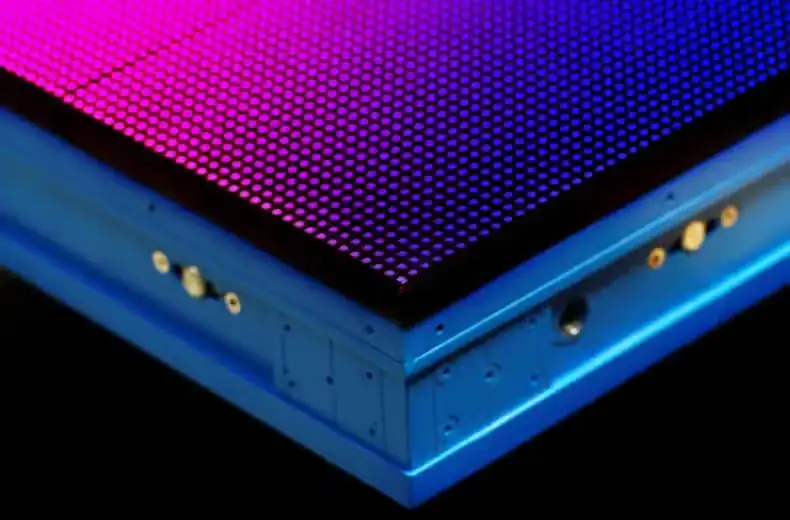
Is LED or LCD Better?
To answer the question ‘which is better- LED or LCD TVs?’, we need to first establish which type of LED we are referring to, LED backlit or direct view LED and then evaluate them on various factors that make a display better or worse.
Let us go through these factors one by one and understand which technology wins in each criterion:
Energy Efficient
Since LEDs replace fluorescent bulbs with light-emitting diodes, Back lit or edge lit LED TVs are more energy-efficient than LCDs and direct view LED displays. A 32-inch LED TV screen consumes 10 watts less power than the same size LCD screen. The difference in power consumption increases as the size of the display increases. A direct view LED can consume up to 150 – 450 watts per m2 in some cases where the display is not very efficient whereas LED back lit or edge lit displays can be as little as 80-100 watts per m2.
Size
An LED TV panel is thinner than an LCD panel but dvLED can be very thin as well as have no limitations on overall size. On average, an LED TV screen can be one-third the thickness of an LCD screen of the same size. A direct view LED can be as small as 40mm in depth and also has the advantage of being able to be built in a modular fashion to any size required, you could literally build displays 100’s of meters long!
Viewing Angle
Edge-lit LEDs have a slight drawback in viewing angle compared to LCDs, because of the position of the light source. However, direct-view LEDs offer a better angle for viewing than LCDs (160º – 180º) as the light source is evenly spread on the screen.
Response Time
This is the time it takes to shift from one colour to another. Response times are generally measured in milliseconds (ms). The shorter the time to respond, the better the quality of the images produced.
When it comes to LCD vs LED, typically, LED TVs have shorter (better) response times than LCD screens. With regards to dvLED, it comes down to multiple factors including the LED processor, the receiving card inside the LED cabinet and the data cables (cat 5, cat 6 or fiber) that come from the LED processor to the LED display. In general the response time is usually slower than traditional LED/LCD with even the most advanced systems suffering from at least 1 frame of latency.
Contrast
Since LED displays use full-array LED backlighting rather than one big backlight, LED TVs offer significantly better contrast than LCDs but direct view LED is now far superior. LCD backlighting technology only shows white and black, but LED backlighting can emit the entire RGB spectrum, thereby providing a deeper RGB contrast. Direct view LED has made significant improvements over the last few years with the introduction of micro LED, GOB and COB LED which have adopted a dark resin layer on top of LED modules which gives incredible levels of contrast.
Which Lasts Longer, LCD or LED?
If you wonder which display will last longer, this debate is also won by LED displays. LED televisions and dvLEDs have a longer lifespan of 100,000 hours on average, compared to 50,000 hours provided by LCD televisions. Direct view LED is also modular so even if one part fails, it’s easily replaced meaning the display can keep going. Dynamo LED Displays have LED screens in the field still operating well past 100,000 hours.
Is LED or LCD Better for the Eyes?
Over exposure to blue light has been proved to be damaging to human eyes. An LED TV provides the option to dim the backlight, along with other eye comfort features. Not only that, it provides a wider viewing angle without harming image quality. Therefore, an LED TV is far better for your eyes than an LCD in regards to blue light but some dvLED can be harmful due to its increased brightness and concentrated blue light potential.
Maintenance
In an LED TV, a lot of smaller diodes are used and if a diode is damaged, it can be replaced. In an LCD, you will need to replace the entire bulb in case of damage. With a dvLED it is made up of many modular components that can be easily swapped out if they fail. Therefore, an dvLED display is easier to maintain than an LCD and LED TV although the cost can be a lot higher.
Cost
Since LEDs are a better and newer technology, the price of an LED TV is higher than an LCD and the cost of dvLED is higher than both traditional options. However, this is only when we are considering the purchase cost.
When you consider factors such as lifespan and maintenance, an LED display turns out to be cheaper than an LCD one in the long run and dvLED can be cheaper when compared to a large video wall made up of multiple monitors especially if one fails and its impossible to find a like for like replacement.
Which Has Better Picture Quality – LED or LCD?
The picture quality of an LED display is far better than an LCD. Due to modular light-emitting diodes, an LED screen produces better control over the contrast, rendering a clear picture. Also, LED provides RGB contrast, which can show truer blacks and truer whites. Not to forget, they provide a shorter response time as well. Both of these factors result in LED displays having a better picture quality compared to LCD displays and dvLED being far superior on larger displays over around 120″.
dvLED it is a little more subjective due to factors such as pixel pitch and resolution etc. That being said, there is no competition for a large LED wall with an ultra fine pitch!
Which is Heavier, LCD or LED?
Since LED displays are considerably thinner than LCDs, they weigh considerably less. On average, an LED screen weighs about half of an LCD screen of the same size and dvLED can vary hugely depending on the model or application.
Summary
3.1 Pros and Cons of LCD TV
| Pros | Cons |
|
|
3.2 Pros and Cons of LED TV
| Pros | Cons |
|
|
3.3 Pros and Cons of Direct View LED
| Pros | Cons |
|
|
Why LED is Better Than LCD
As you might have noticed by now, LED wins the battle with LCD without any doubt. This is because LED displays have an advantage in all the factors that matter when considering a purchase, except price.
Even when you consider the price, you will find that while LED technology is costlier, it provides better value for money in the long run. This is because of the longer lifespan and easier maintenance of LED screens wether dvLED or LED TV.
Therefore, if you are considering buying a display for yourself, you should go for an LED display and choose LED TV for smaller displays and dvLED for larger installations.
Conclusion
LCD vs LED? The LED is often regarded as a third-generation display. It meets the demands and preferences of the new generation very much. Direct view LED is fast becoming the major player with new technologies and lower pixel pitches it may just be a matter of time before all TVs are direct view LED!
Frequently Asked Questions
Yes, an LED monitor uses considerably less electricity than an LCD monitor. This is because it replaces one big fluorescent bulb with tiny diodes which consume negligible energy. Direct view LED uses more power as there are more individual LEDs and higher brightness levels.

